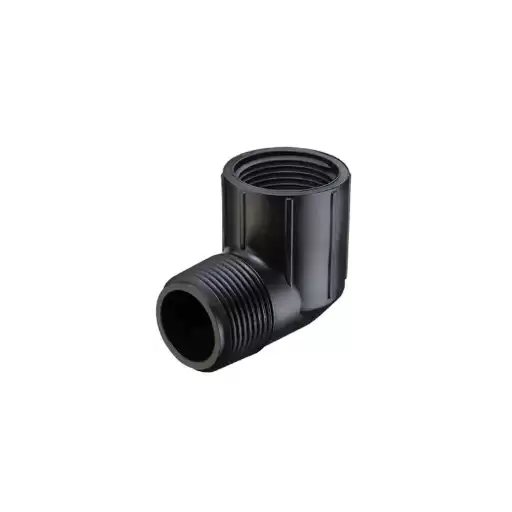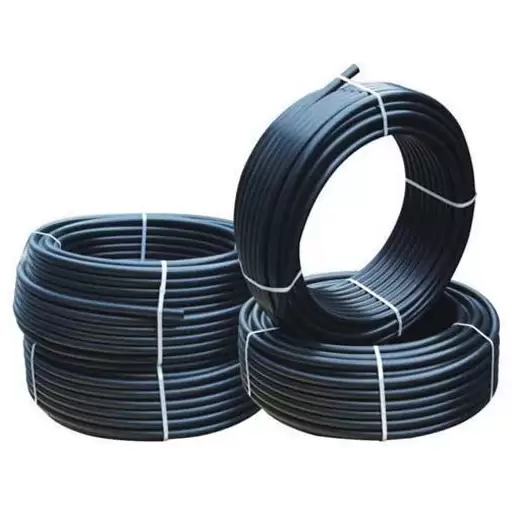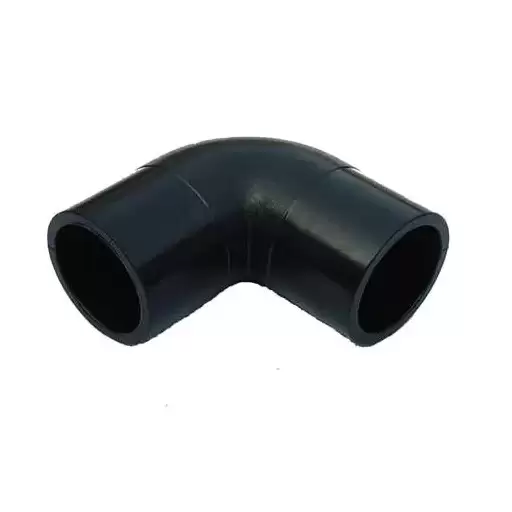High-density polyethylene (HDPE) pipes are widely recognized for their durability, flexibility, and resistance to various environmental and chemical challenges. However, their performance characteristics are heavily influenced by temperature and pressure conditions, making an understanding of these factors critical for engineers, designers, and decision-makers. The correlation between temperature variations and pressure ratings not only impacts material behavior but also determines the operational longevity and safety of the pipeline system. This article provides a comprehensive overview of the temperature-dependent limitations of HDPE pipes, examines how internal pressure affects their structural integrity, and discusses the key material properties that influence their performance under varying conditions.
What is the temperature range for HDPE pipes?
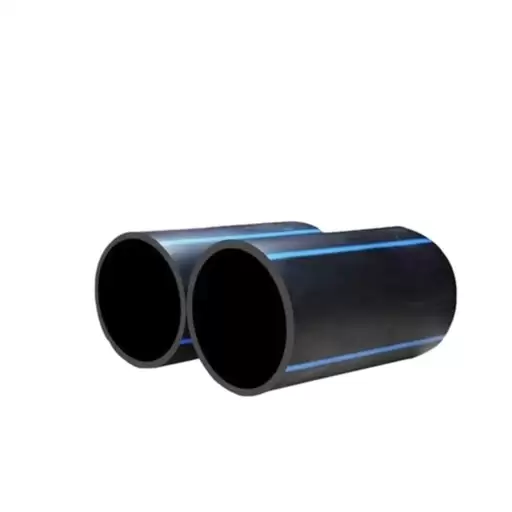
What are the typical operating temperatures for HDPE pipes?
The operational temperature ranges for HDPE pipes is from 32°F (0°C) to 140°F (60°C). For these temperatures the material is expected to maintain shape and mechanical functions under normal work conditions. Although, factors like internal pressure, flow medium and extenral environmental impacts may also affect the ideal temperature.
- Lower Limit: 32°F (0°C). – For temperatures less than this range, HDPE pipes are susceptible to becoming brittle which means they are much more probable to cracking from impact or mechanical stress.
- Upper Limit: 140°F (60°C). – Exceeding this temperature may result in polymer softening over time and will reduce the pipes tensile strength, creep resistance and durability.
Furthermore, there is a limited amount of time that can be sustained under the defined range. Hot pulses for example when flushing a system or cycling its temperature can increase the temperature of the HDPE pipes, but are not beneficial in the long term.
How does temperature affect the pressure rating of HDPE pipes?
The impact of thermic changes on the pressure rating of HDPE pipes is primarily due to the characteristics of the material used. Polyethylene’s temperature affects the pressure rating of HDPE pipes. As temperature increases, the tensile strength of HDPE increases, which causes it to be able to withstand external and internal pressures. For example, at 20°C (68°F), HDPE pipes usually function at their highest rated pressure, which means going over this temperature increases the chances of derating pressure safely without compromising on structural integrity.
- Base Pressure Rating (20°C/68°F): Manufacturers specify that Pipes are rated at 20 degrees centigrade, which is usually the standard specified.
- Temperature Derating Factor: Any temperature past 20 degrees centigrade causes the rating to decrease by a certain factor, which is used to multiply the pressure rating.
- Long-Term Service Life: Sustained high-temperature alter the expected rate and length as well as decrease overall longevity of the pipes.
Any thermos mechanical assessment, when done, should account for temperature changes during the operation of the pipes to make sure that the environment that the pipes are placed in guarantees the factors are safe for long-term performance and safety.
Can HDPE pipes withstand extreme temperatures?
The operational temperature range of High-Density Polyethylene (HDPE) pipes is around -40 degrees Celsius to 60 degrees Celsius. HDPE pipes maintain sufficient mechanical strength and withstand static pressure up to these ranges. Unfortunately, any exposure to extremes can severely hinder their functionality:
- Low Temperatures: At sustained temperatures lower than -40 degrees Celsius, HDPE material will get brittle. If under stress or impact, this could lead to cracking. Adequate insulation will alleviate these potential dangers in colder conditions.
- High Temperatures: Beyond 60 degrees Celsius, the pipes undergo a loss of tensile strength and an increased rate of creep deformation over time. For example, the pressure rating at 70 degrees Celsius could reach about half due to softened material.
While using HDPE pipes in extreme temperatures, it becomes crucial to address the thermal linear expansion coefficients of pipe materials, which is roughly 1.8 x 10^-4 mm/mm/degree Celsius. Systems that are subject to high or low extremes may require advanced materials and coatings.
What are the low-temperature limitations of HDPE pipes?

Do HDPE pipes become brittle in cold conditions?
Sure, HDPE pipes can get more brittle than usual when exposed to extremely low temperatures, but their efficacy remains robust at a wide range of temperatures. For practical use, -180° F is higher than the brittle point of HDPE. The ductility of HDPE pipes also remains exceptional at service temperatures of around -40°F. At these lower limits of operation, materials are less likely to endure impact damage, therefore, good care is required to improve resistance.
- Brittle Point: Approximately -180°F (-118°C).
- Service Temperature Limit: Down to -40°F (-40°C) with reliable performance.
- Impact Resistance: Decreases as temperature drops, requiring care.
These factors indicate how HDPE is durable under cold conditions suggesting its application in a variety of low temperature scenarios when well controlled.
How does freezing impact HDPE pipe performance?
The performance of HDPE (High-Density Polyethylene) pipes under freezing temperature conditions is controlled mainly by the thermal and mechanical characteristics of the material.
HDPE has a low ductile to brittle transition temperature, generally lower than -40C. This means that HDPE has the unique ability to remain flexible under low temperatures. This means that within this range, HDPE is still ductile and can withstand stress without cracking. However, if the temperature falls well below this range, there is a possibility of brittleness setting in, which could increase the chances of fractures developing under stress.
Freezing conditions are also significant for water or other liquids contained in the pipe. For example, when water is frozen it expands roughly 9%. The effective elasticity and stress-relaxation behavior of HDPE pipes permit them to withstand expansion without rupturing. In addition, the high tensile elongation (standard is about 600%) along with the mod unusual measurement of elasticity of 0.8 to 1.5 GPa at standard temperature allows deformation under expanded ice pressure. As a result, HDPE is less likely to fail compared to more rigid piping materials.
Lastly, sustained lowering of temperature may undermine the long-term properties of the pipe by lowering its creep resistance. Creep behavior, described with the use of a creep modulus, is how a material mechanically deforms over time while subjected to a non-physical load or stress. Despite histrorically outstanding creep performance of HDPE, consequence on an application with a persistent low temperature should logiclly be thought through.
In conclusion, HDPE pipes have good performance under freezing conditions because they are flexible, have good stress-relaxation, and can expand. Knowing the material’s ductile-to-brittle transition temperature and creep features is necessary when designing structures at cold regions.
How does high temperature impact HDPE pipe performance?
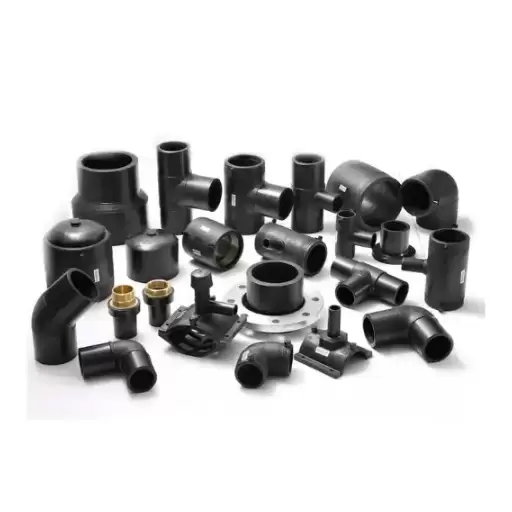
What happens to HDPE pipes at high temperatures?
The mechanical strength and rigidity of HDPE pipes are reduced as a polymer is subjected to heat due to its sensitivity to thermal conditions. More specifically, the tensile strength of HDPE polymers decreases with temperature growth and approaches the maximum operating temperature of around \(60° C\) for standard high-density polyethylene grades. In addition, the modulus of elasticity decreases greatly, which makes the pipe more prone to deformation under excessive loads or pressure.
- Diminished maximum continuous operating temperature: Thermal degradation and structural loss begin to occur beyond \(60° C\) (140F) for standard HDPE.
- Thermal expansion coefficient: Change in length must be taken into consideration in the context of higher temperatures.
- Diminished pressure rating classification: The pressure class would most likely change considerably. As an example, at \(60° C\), the pressure rating could be around 50 percent of the nominal pressure at \(20° C\).
For systems that employ HDPE pipes in higher temperature scenarios, pipes should be designed with expansion joints or supports to ensure longevity and mitigate the other negative impacts.
Are there special considerations for using HDPE pipes in hot environments?
The following is to be noted while using HDPE pipes in high-temperature settings:
- Temperature-Pressure Derating: Like most materials, HDPE pipes tend to lose their ability to withstand pressure as their temperatures increase. For example, while at 60 degrees Celsius (140 degrees Fahrenheit), the estimated pressure rating drops to about 50 percent of the estimated pressure at 20 degrees Celsius (68 degrees Fahrenheit). A careful selection of pipe class will be required to ensure the class on selection meets operational demands.
- Expansion and Contraction During Heating and Cooling: Pipes made from HDPE have a tendency of being greatly affected from the temperature changes in their environment, having a remarkably high, approximately 0.2 mm/m/°C thermal expansion coefficient. Therefore, a 40 degree increase in temperature (104 degrees Farhenheit) can lead to the expansion or contraction of an 8 mm length of pipe material. This will require flexible supports or expansion joints to counter these effects.
- Heating Material UV Resistance: If HDPE pipes will be installed where direct sunlight will be exposed to them, they should include additional UV stabilizers such as carbon black in order to avoid degradation. The material structure can be weakened considerably over longer periods of exposure subjected with increased temperatures.
When taking into account the designs stated, proactive measures can be adopted to preserve the functionality and the longevity of HDPE piping systems in hotter climates.
How does heat affect the longevity of HDPE piping systems?
Oxidative deterioration and reduction in mechanical properties attribute the most impact on the lifespan of the HDPE piping system at elevated temperatures. High temperature can lower the pipe’s pressure capability owing to a reduction in the pipe’s tensile strength and creep resistance. For instance:
- Thermal Pressure Derating: HDPE’s ability to sustain pressure decreases as the temperature increases. For example, at 140°F (60°C), a derating factor like 0.50 is usually enforced, meaning that at 73°F (23°C), the pipe could only handle half of the pressure rating.
- Oxidative Degradation: Prolonged exposure at temperatures greater than 122°F (50°C) can worsen the oxidation process and hence require adequate stabilization to maintain the integrity of the polymer over time. Antioxidant additives must be employed to alleviate this risk.
- Time-to-Failure Impact: Heat is proven to exceed the anticipated lifespan of HDPE systems (50-100 years at normal operating temperatures). For example, systems designed for 20 years at an operational temperature of 140°F (60°C) may be capped because materials would fatigue faster.
- Thermal Expansion: Higher heat results in higher rates of contraction and expansion, which could place stress over time, particularly around the fittings and joints.
To prolong the lifespan of the system, an appropriate design strategy with temperature-specific pressure rating, antioxidant stabilization, and thermal compensation should be employed. These approaches reduce the adverse impact of temperature or heat and keep the system functional throughout its life expectancy.
What factors influence the temperature rating of HDPE pipes?
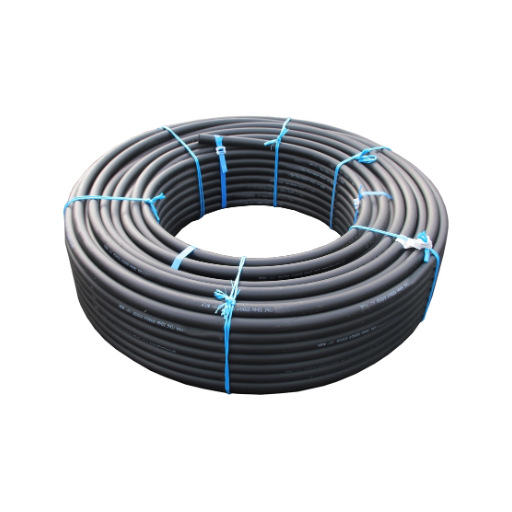
How does wall thickness affect temperature resistance in HDPE pipes?
The cumulative impact of pipes with various wall thicknesses is fundamental to understanding the temperature resistance of HDPE pipes, considering that greater structural strength deformation is offered by greater wall thicknesses. It is well-known that the stronger the structural components, the greater the level of resistance to deformation resulting from heating. This means that a thicker wall will reduce the level of possible thermal expansion that may destroy the pipe’s structural integrity when applied in high-temperature environments. Besides, the ability of thinner walls to enhance pressure-bearing capacity at high temperatures is also attributed to thermal expansion and contraction stress reduction.
- Standard Dimension Ratio (SDR): Higher SDR values are given where pipe walls are thinner, as SDR expresses the ratio of outer diameter to wall thickness of a pipe. Therefore, SDR 9 or SDR 11 indicate thicker walls with better temperature resistance and the ability to withstand higher pressure.
- Operating Temperature Thresholds: The typical HDPE operating range is around -40F (-40C) to 140F (60C), with some reserves for greater precision. However, out of those, thicker-walled versions are expected to perform closer to the upper bound.
- Pressure Ratings (PR): With temperature increments, there is a drop in the pressure rating value, but thicker-walled pipes maintain their structural integrity. As an example, an SDR 17 pipe at 60F (16C) can support 100 psi, but at 120F (49C), the pressure will be much lower due to material softening.
To maximize the efficacy of high-density polyethylene piping systems, careful design considerations like choosing the correct SDR and assessing the relevant temperature and pressure of the application must be evaluated.
What role does pipe diameter play in temperature limitations?
A pipe’s diameter is paramount to understanding its temperature limitations as a consequence of its effect on pressure and heat dissipation. In my opinion, for a constant SDR, pipe wall thickness would increase as pipe diameter increases, which improves internal pressure resistance and stability due to internal temperature changes. Larger diameters, however, would be subjected to higher levels of thermal expansion and contraction, which needs to be addressed in system design.
- Wall Thickness (WT): Strength aspects of increased pipe size must be used along with the operating pressure and temperature to get optimum performance out of thicker walls.
- Thermal Expansion Coefficient: Increased pipe diameters are more significantly impacted by increasing temperature, considering the change of dimensions.
- Mechanical Strength: Regardless of the diameter, pressure ratings continue to drop with an increase in temperature. However, proportionately thicker walls (lower SDR value) do compensate for the lost strength, but only to a specific degree.
Grasping these intricate relationships is important for the longitudinal effectiveness and dependability of HDPE piping systems.
How do external pressures impact HDPE pipe temperature ratings?
The performance of HDPE pipes is greatly affected by the impact of external factors, especially at high temperatures. When external pressure is applied, compressive forces are applied to the system, which may lower the effective pressure rating of the pipe. These effects need to be considered for high-stress or buried pipeline scenarios where soil or water pressure is extra. The relationship of the external pressures with temperature ratings may yield an increase in the loss of the pipe’s ability to hold internal pressures efficiently.
- Stress due to External Load: Measures compressive stress caused by surrounding factors like columns of soil or water.
- Resistance to Buckling: Thinner walled pipes of larger diameters are prone to greater buckling due to external pressure at higher temperature where the flexibility of the material is increased.
- Reduction Factor for Temperature and Strength: Tension strength reduction due to high temperature directly impacts the pipe’s resistance to deformation by external loads.
- Safety Factor in Design: Increased external load impacts the reliability of the system for a long time, allowing some degree of flexibility in safety factors.
Careful consideration of the factors described above makes sure that the HDPE piping systems operate under most of external and internal stress scenario while maintaining optimal performance and structural integrity.
Are there industry-specific temperature considerations for HDPE pipes?
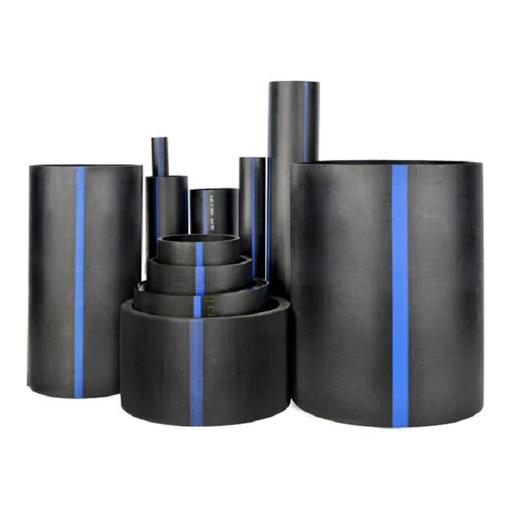
What are the temperature requirements for HDPE pipes in the oil and gas industry?
In my view, the oil and gas industry’s requirements for temperature consideration of HDPE pipes are specific to an individual application and operational conditions. Nevertheless, the thermoplastic nature of the material makes all the elevated temperature exposure for design purpose consideration because there is a change in mechanical properties.
- Thermal Expansion Coefficient: In the design of the pipelines, the high coefficient of thermal movements that HDPE has (100-200 x 10^-6 in/in/°F) puts much emphasis on the denied endorsement, also known as compensation.
- Short-Term versus Long-Term Strength: The higher the temperature, the weaker the short-term tensile strength of the pipe, especially when it reaches 140F (60C), weakening the performance of the pipe under pressurized conditions.
- Creep Behavior: The Revolving of the pipe also depends on the ability of sustaining load over a period is set through The higher the temperatures the efficiency is set to achieve time dependent deformation (creep).
- Temperature De-Rating Factors: To Aside achieve system safety, some set offset of pressure rating de-downfind the precise rating at a higher temperature. As an example, a temperature of 120F (49C) typically set a free rating known said being dished out apply abuse as in one looking is 50 percent of what using out at 73 F (23C).
In summary, for oil and gas applications, HDPE piping systems can only be projected to function reliably and durably if factors such as the material choice, pipe dimension,s or the thickness for the walls and the environment combination are accurately met.
How are HDPE pipes used in high-temperature industrial processes?
Excellent chemical resistance, flexibility, and relative durability make HDPE Pipes widely accepted for use in high-temperature industrial processes. However, their effectiveness and safety can be greatly compromised if relevant temperature-dependent technical limitations are not observed.
- Temperature Limitations: Mechanical properties of HDPE pipes, including stiffness and tensile strength, significantly deteriorates above 140°F (60°C). Furthermore, these capabilities are most certainly inhibited under temperatures exceeding 140°F.
- Pressure De-Rating: The pressure rating of HDPE pipes is proportionally reduced with increasing temperature. For instance, at 120°F (49°C), the pressure-handling capacity must be reduced to approximately 50% of its original rating at 73°F (23°C).
- Creep Resistance: Sustained exposure to higher temperature levels brings about greater creep performance which requires the use of thicker walled pipes or other materials an high sustained stress levels.
- Insulation and External Protection: To mitigate thermal and enviromental degradation, insulation or shielded protection is often placed on HDPE pipes subjected to thermal stresses to control exposure and enable a longer service life.
- Industry Standards Compliance: Critical guidelines with regard the use of HDPE piping at high temperatures ensures adherence with industry standards such as ASTM F714 and ISO 4427.
All things considered, HDPE pipes have efficiency and reliability within the technical requirements set under higher temperature industrial processes.
What temperature limitations apply to HDPE pipes in water distribution systems?
With HDPE (High-Density Polyethylene) pipes, water distribution systems may reach a maximum operable temperature of 140°F or 60°C for short-term periods or 120°F or 49°C for long-duration periods. Breaching these bounds may lead to the softening of materials, impede pressure capacity, and accelerate deformation via creaping. These bounds can be influenced by the following factors:
- The Coefficient of Thermal Expansion: The coefficient to increase and shift supported by HDPE is quite notable, with an estimation even reaching 1.5-2.0 in the range of 10^-4 in F. As a result, this warrants appropriate evaluation for expansion and contraction to prevent stress upon joints or misalignment of the system.
- Limiting Factor of Pressure De-Rating: The observed increase in temperature will correlate with a drop in the rated pressure for HDPE pipes. For instance, at an elevated temperature of 50 degrees celsius, the pressure rating may lower by a staggering 50% in comparison to the measurement taken at room temperature of roughly 23 degrees Celsius.
- Creep Behavior: If a supplied temperature is consistently set to its surpassing boundary (or level), it has the potential to further amplify creep, which in turn puts the integrity and structure of the pipes at risk and can lead to failures in design.
Water distribution systems equipped with HDPE pipes to obtain maximum efficiency within the water should ideally stick to the set operational temperatures and, at the same time, have to be able to effectively manage expansion along with the reduction in pressure in the pipes.
Reference sources
Frequently Asked Questions (FAQs)
Q: What is the typical temperature range for HDPE pipes?
A: High-density polyethylene (HDPE) pipes are widely used in various industries due to their versatility. The typical service temperature of HDPE pipes ranges from -40°C to 60°C (-40°F to 140°F). However, the exact temperature range may vary based on the specific grade of HDPE material used and the application requirements.
Q: How does temperature affect the pressure limitations of HDPE pipes?
A: Temperature plays a crucial role in determining the pressure limitations of HDPE pipes. As the temperature increases, the pressure rating of the pipe decreases. This is because higher temperatures can result in reduced material strength and increased flexibility of the plastic. Operating the pipes at elevated temperatures without adjusting the pressure accordingly can lead to premature failure or reduced service life.
Q: What is the melting point of HDPE pipes?
A: The melting point of HDPE pipes typically ranges from 120°C to 135°C (248°F to 275°F). However, it’s important to note that HDPE pipes should not be operated near their melting point, as the material’s structural integrity begins to deteriorate at much lower temperatures. The maximum recommended operating temperature is usually around 60°C (140°F) for most applications.
Q: How does the resistance of HDPE pipes change in extreme temperature conditions?
A: HDPE pipes exhibit different behaviors in extreme temperature conditions. In very cold temperatures (below 20°C or -4 4°F), the material may become more brittle and susceptible to impact damage. In high temperatures (above 60°C or 140°F), the pipes may become more flexible and have reduced pressure capacity. Proper material selection and design considerations are crucial for ensuring optimal performance and longevity in extreme temperature environments.
Q: Can HDPE pipes be used in applications with temperatures above 80°C?
A: While standard HDPE pipes are not recommended for use above 80°C (176°F), there are specialized grades of HDPE designed for higher temperature applications. These high-temperature-resistant HDPE pipes may be suitable for use up to 100°C (212°F) in certain cases. However, it’s essential to consult with the manufacturer and consider factors such as pressure requirements and chemical compatibility when choosing the right HDPE pipe for high-temperature applications.
Q: How does weather affect the performance of HDPE pipes?
A: Weather conditions can impact the performance of HDPE pipes, especially when exposed to harsh weather. UV radiation from sunlight can cause gradual material degradation over time, potentially affecting the pipe’s lifespan. Extreme cold can make the pipes more brittle, while high temperatures can reduce pressure capacity. To mitigate these effects, proper installation techniques, such as burying the pipes or using UV-resistant grades, should be employed.
Q: Are there any special considerations for welding HDPE pipes in different temperature conditions?
A: Yes, temperature plays a significant role in welding HDPE pipes. The ambient temperature and the temperature of the pipe material can affect the quality of the weld. In cold weather (below 5°C or 41°F), preheating the pipe ends may be necessary to ensure proper fusion. In hot weather, care must be taken to prevent overheating of the material. It’s important to follow manufacturer guidelines and industry standards for welding HDPE pipes under various temperature conditions to ensure strong and reliable joints.
Q: How can I ensure the longevity of HDPE pipes in varying temperature environments?
A: To ensure the longevity of HDPE pipes in varying temperature environments, consider the following: 1) Choose the appropriate HDPE grade for the expected temperature range, 2) Design the system with proper pressure ratings accounting for temperature fluctuations, 3) Use proper insulation techniques for extreme temperature conditions, 4) Implement regular inspection and maintenance programs, 5) Protect pipes from direct sunlight and UV exposure when possible, and 6) Follow manufacturer guidelines for installation, operation, and maintenance. By taking these steps, you can maximize the service life and performance of HDPE pipes in challenging temperature conditions.



